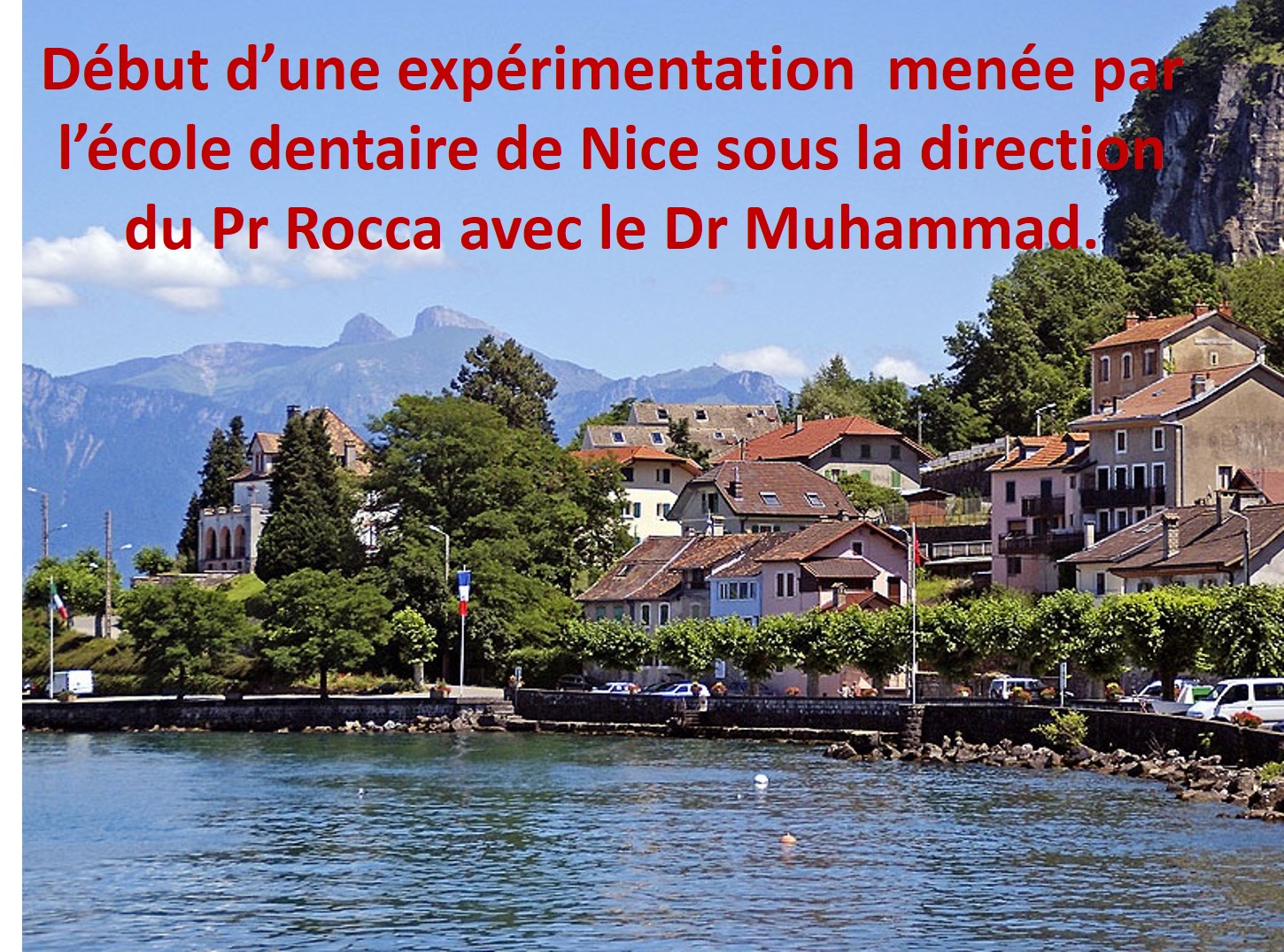Photodynamic Therapy in root canal infection control - Dr Omid MUHAMMAD
Ex Vivo evaluation of two photodynamic therapy activated by laser and led to remove artificial endodontic biofilms from root canals (Omid Muhammad, Jean Paul Rocca, Etienne Medioni)
Le biofilm est un problème récurrent dans différents domaines médicaux. En pathologie dentaire il soulève de nombreuses tentatives de traitement car il est un obstacle certain à toute cicatrisation et induit des complications.
Il s’agit en fait d’une entité que l’on retrouve également en dermatologie (Propioni Bacterium acnes). Il freine considérablement la gestion d’une acné par exemple. (Certaines formes cliniques)
Cette étude expérimentale menée sur un biofilm poly -microbien nous apporte sans doute des pistes de travail très prometteuse.
Si la photothérapie dynamique ne fait que réduire les germes in situ. Son association à d’autres sources d’énergie comme une irrigation sous ultrasons pourrait permettre d’être plus radicale.
Voici donc le début d’une expérimentation menée par l’école dentaire de Nice sous la direction du Pr Rocca avec le Dr Omid Muhammad.
Michèle Pelletier- Aouizerate
Voir PDF
PROGRAM & ABSTRACTS
Ex vivo evaluation of two photodynamic thrapy activated by laser and LED to remove artificial andodontic biofilms from root canals
Omid H. Muhammad 1,3, Jean-Paul Rocca 1,2,3, Etienne Medioni 1,2,3
1 : MICORALIS Laboratory (EA 7354), Faculté d’Ontologie, Université de Nice-Sophia Antipolis, Nice, France
2 : Pôle Odontologie, CHU Nice, France
3 : Member of University Côte d’Azur
Aim : To evaluate the ability of different photodynamic therapy (PDT) Protocols to disrupt an artificial endodontic microbial film.
Methodology : Thyrty extracted teeth were prepared and divided in three groups. All samples were infected with an artificially formed biofilm made of enterococcus faecalis Streptococcus salivarius, Porphyromonas gingivalis and Prevotella intermedia bacteria. The biofilm was 7 days old. First group was treated with Aseptim plus, photo-activited disinfection system (LED 635nm and toluidine blue as photo sensitizer), second group was treated by a 650nm diode Laser and Toluidine blue with a concentration of 15µg/mL 1 as photosensitizer. Ther third group, as control group, was treated using passive ultrasonic irrigation (PUI) with a 17% EDTA solution and a 2.6% NaOCI solution. The working time for all three groups was 3 min. Presence or absence of biofilm was assessed by aerobic and anaerobic cultures and controlled by SEM observation in low vacuum mode.
Results : There was significant difference between results obtained from groups treated by Asptim and diode Laser (P< 0,0043) in terms of bacterial load reduction. However, in cultures none of them could remove microbial biofilm totally. PUI and NaOCI and EDTA group showed the most sigificant reduction of bacterial infection (P<0,0001) and destruction of microbial biofilm.
Conclusions : Photodynamic therapy using a LED might reduce the bacterial load inside nan artificial infected root canal, but PDT activated by a Diode laser could not disrupt bacterial biofilms. Only passive ultrasonic irrigation using NAOCI and EDTA eradicated bacterial biofilm totally in this experiment.
Acknowledgements : The authors deny any conflicts of interest related to this study.
Ex Vivo evaluation of two photodynamic therapy activated by laser and led to remove artificial endodontic biofilms from root canals (Omid Muhammad, Jean Paul Rocca, Etienne Medioni)
Biofilm is a recurring problem in different medical fields. In dental pathology it drives many treatment essays effort because it is a barrier against any healing process and induces complications.
This is actually an entity that is also recurrent in dermatology (Propioni Bacterium acnes). It severely prevents the management of acne for example. (Some clinical forms)
This experimental study of a poly microbial - Biofilm brings us probably very promising lines of work.
If photodynamic therapy only reduces germs in situ. Its combination with other energy sources such as ultrasonic irrigation could afford to be more radical.
Here is the beginning of an experiment conducted by Nice dental school running by Professor Rocca with Dr. Omid Muhammad.
Michele Pelletier- Aouizerate
PROGRAM & ABSTRACTS
Ex vivo evaluation of two photodynamic thrapy activated by laser and LED to remove artificial andodontic biofilms from root canals
Omid H. Muhammad 1,3, Jean-Paul Rocca 1,2,3, Etienne Medioni 1,2,3
1 : MICORALIS Laboratory (EA 7354), Faculté d’Ontologie, Université de Nice-Sophia Antipolis, Nice, France
2 : Pôle Odontologie, CHU Nice, France
3 : Member of University Côte d’Azur
Aim : To evaluate the ability of different photodynamic therapy (PDT) Protocols to disrupt an artificial endodontic microbial film.
Methodology : Thyrty extracted teeth were prepared and divided in three groups. All samples were infected with an artificially formed biofilm made of enterococcus faecalis Streptococcus salivarius, Porphyromonas gingivalis and Prevotella intermedia bacteria. The biofilm was 7 days old. First group was treated with Aseptim plus, photo-activited disinfection system (LED 635nm and toluidine blue as photo sensitizer), second group was treated by a 650nm diode Laser and Toluidine blue with a concentration of 15µg/mL 1 as photosensitizer. Ther third group, as control group, was treated using passive ultrasonic irrigation (PUI) with a 17% EDTA solution and a 2.6% NaOCI solution. The working time for all three groups was 3 min. Presence or absence of biofilm was assessed by aerobic and anaerobic cultures and controlled by SEM observation in low vacuum mode.
Results : There was significant difference between results obtained from groups treated by Asptim and diode Laser (P< 0,0043) in terms of bacterial load reduction. However, in cultures none of them could remove microbial biofilm totally. PUI and NaOCI and EDTA group showed the most sigificant reduction of bacterial infection (P<0,0001) and destruction of microbial biofilm.
Conclusions : Photodynamic therapy using a LED might reduce the bacterial load inside nan artificial infected root canal, but PDT activated by a Diode laser could not disrupt bacterial biofilms. Only passive ultrasonic irrigation using NAOCI and EDTA eradicated bacterial biofilm totally in this experiment.
Acknowledgements : The authors deny any conflicts of interest related to this study.

